You probably have stumbled upon many bloggers claim that they make a lot of money from their blog. Some even earn +$100,000/month blogging. How exactly did they do that? Can a beginner blogger make money?
In this blog post, we will try to thoroughly answer all those questions and give you a detailed step-by-step framework you can take to start making money from your blog, even if you are a complete beginner blogger.
How much money exactly can bloggers make?
Before diving deep into the answer, let’s look at some successful bloggers as a reference.
Fire Nation
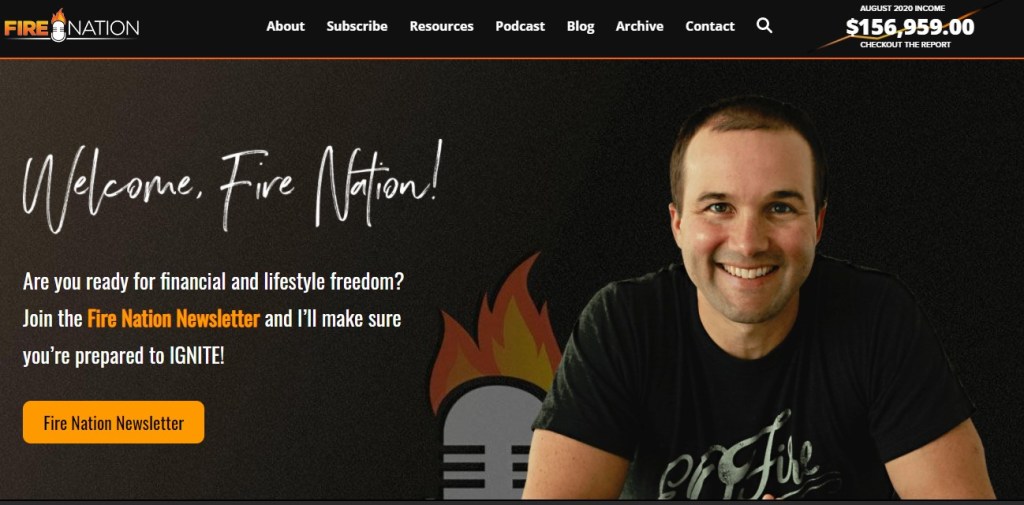
Fire Nation is a blog for entrepreneurs who want to achieve financial and lifestyle freedom.
In their August 2020 income report, they claimed to make $156,959 in gross profit. Their revenue mainly comes from 4 different sources, including sponsorships, online courses, affiliate marketing, and journals.
If you want to start a podcasting business, they have some great articles on starting a podcast and how you can make money from it.
Pinch Of Yum
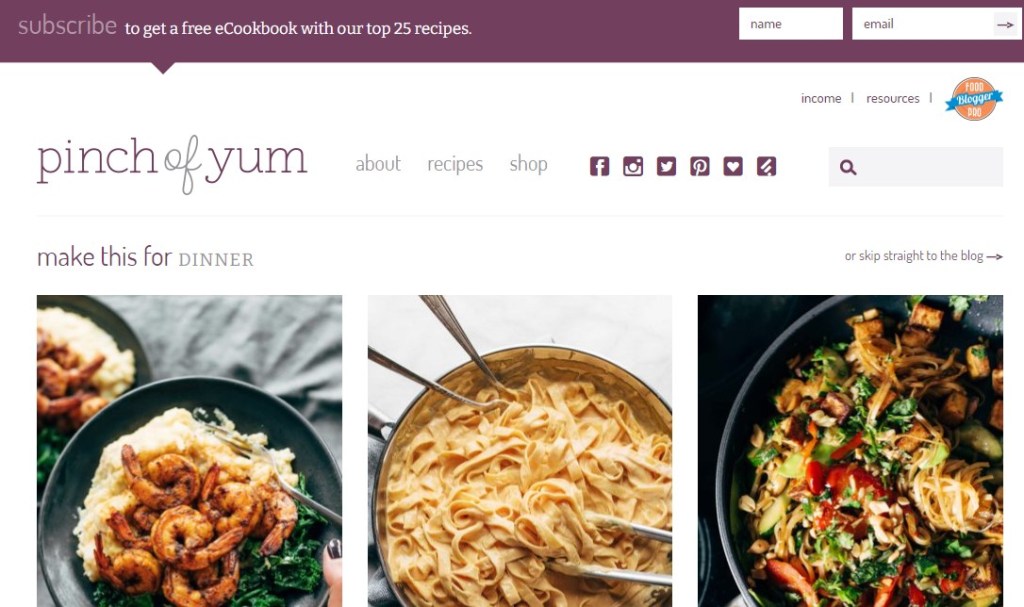
In terms of food blogs, Pinch Of Yum is a role model that has been around for nearly 10 years.
Their food blog content is not only informative but also extremely elegant.
In June 2015, they made a revenue of nearly $40,000 from various sources like displaying ads, Amazon affiliate programs, ebooks, sponsored posts, etc.

They have stopped doing blog income reports for a while now. However, looking at their social media activity and their website statistics, we can confidently say that they are constantly growing at a rapid rate.
Nerd Fitness
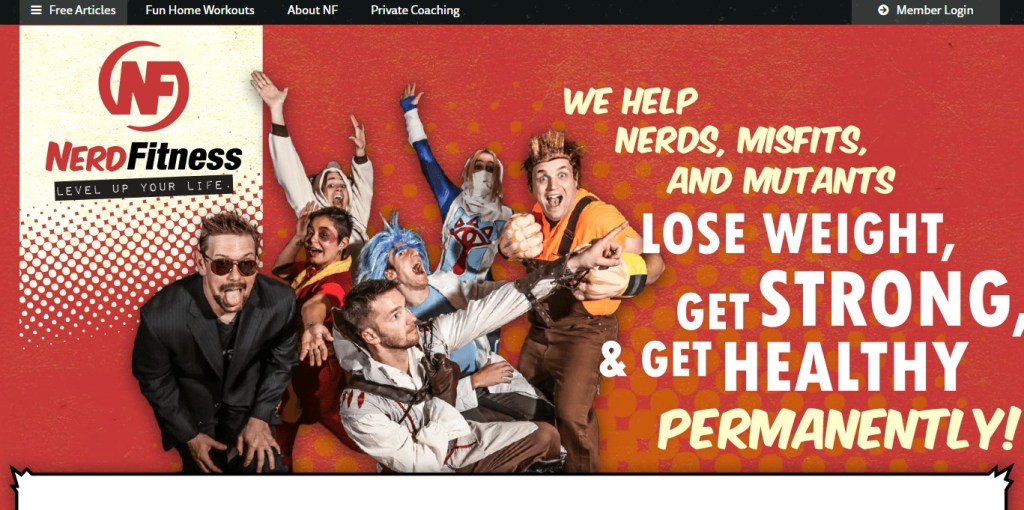
Nerd Fitness is one of the most well-known and successful fitness blogs. They focus on helping people keep fit and stay healthy.
They don’t publicly share how much money they make from their business. However, according to an interview with Kamb, the founder of Nerd Fitness, the business generates seven-figure per year.
Make Money Your Way
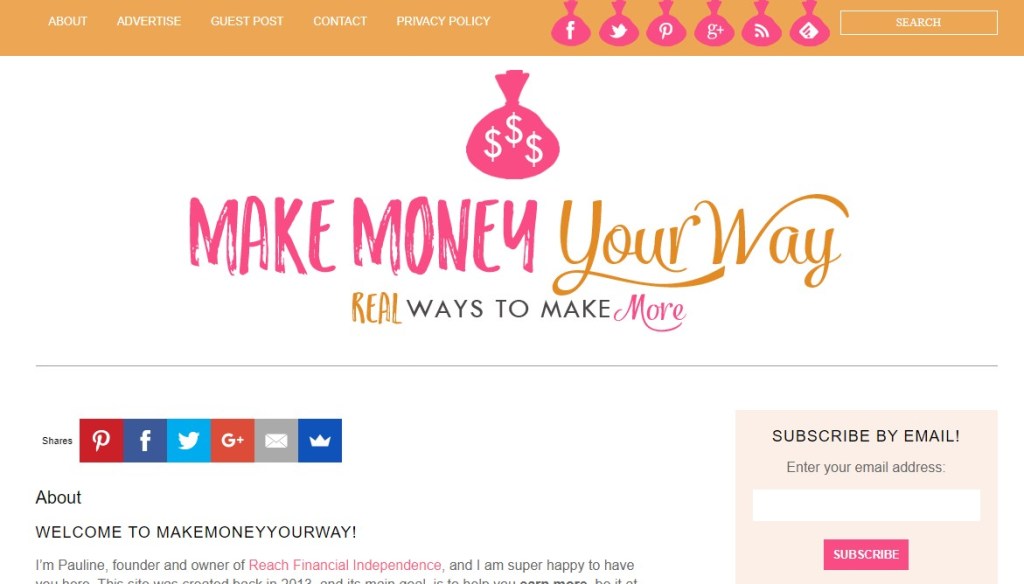
Make Money Your Way is a financial blog aiming to provide information about career improvement, investing, real estate, and online business.
In May 2016, they made $8,760 in net profit. Aside from advertising and affiliate income, they also used their blog to advertise their freelance service to make more money.
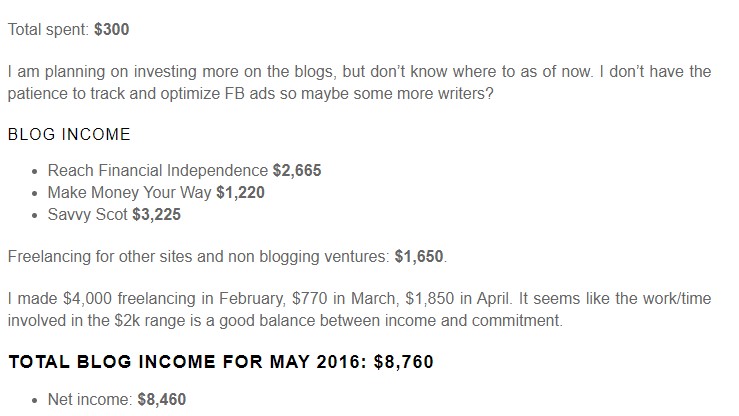
As you can see, making thousands of dollars from a blog is a common thing nowadays.
However, don’t let those numbers make you think it would be easy to earn money blogging, especially if you are a beginner.
Like any business, blogging takes a lot of time and effort to build and make a living out of it.
Many bloggers don’t put enough effort into creating content, promoting their blog, or building a healthy email list. Thus, they fail to make blogging into a stable business.
On average, it requires a blogger at least 4 months to start making money from their blog and at least 6 months to start seeing a consistent stream of income to their pocket. So, if you want to become a successful blogger, be patient and hard-working.
7 proven methods you can make money from your blog
Diversifying your monetization methods is a good practice to make money from your blog. If a method suddenly decides to stop generating income, you always have others to rely on.
There are probably hundreds of methods to make money blogging. However, below are the most common ones that have proven to work for both beginner and veteran bloggers.
Displaying ads
Many people hate ads. However, it still remains the most popular form of monetization for any blog.
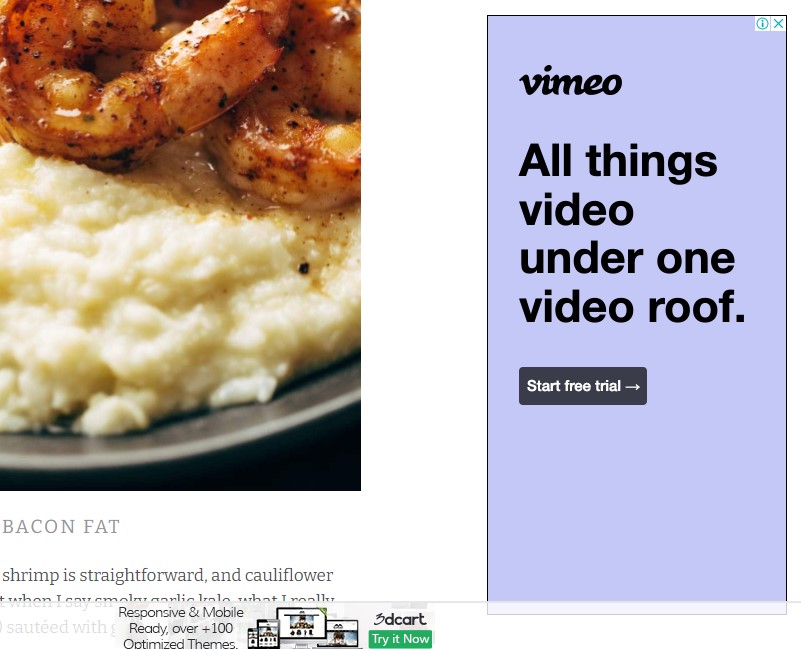
The reason for this popularity is that ads take little time to set up. Furthermore, when they’re already up and running on a blog, there is no need to touch them anymore as ad networks do all the remaining behind-the-scenes work.
Usually, you get paid by ad networks every time a person clicks on an ad displayed on your blog (also known as Cost Per Click or CPC).
Google Adsense is the most well-known ad network for bloggers to start making money. Developing by Google, you can be guaranteed that ads displayed by this network are relevant and family-friendly.
When your blog starts seeing a consistent number of visitors, you can decide to switch from Google Adsense to a more high-paid advertising network like Mediavine or AdThrive.
In the case of Mediavine, they require your blog to have around 50,000 sessions a month (or 60,000 pageviews) before applying for the ad network. Although it’s tough to grow your blog to that number, the amount of money they pay is usually worth the effort.
Affiliate marketing
Affiliate marketing is the process of promoting a product or a service of other people to earn commissions.

Normally, affiliate marketing appears under the form of a tracking link. Whenever a person clicks on the link (also called the affiliate link) and buys stuff from it, the affiliate of that link gets a commission.

The biggest and most well-known affiliate program is Amazon Associates. You can earn up to 10% in associate commissions for every qualifying purchase. There are also millions of products on the platform for you to choose from. Therefore, it’s a go-to destination for finding and monetizing your blog traffic.
Commission Junction, ShareASale, and ClickBank are also huge affiliate networks that you can use to find suitable products to promote on your blog and make money.
Sponsored posts
Similar to affiliate marketing, sponsored posts are content written to promote a product or a service. The difference between the two is that you get a one-time payment for each sponsored post you create.
Many bloggers choose to write sponsored posts for two main reasons. First, they are less distracting than displaying ads that can drive many visitors away from your blog. Second, they earn a fixed amount of money they have negotiated beforehand, no matter if the sponsored post attracts readers or not.

If you are a beginner blogger, there will hardly be any company willing to pay you to write sponsored content. The best thing to do is to grow your blog to a few thousand regular visitors a month before reaching out to relevant brands to ask for sponsorship opportunities.
So, how much should you charge for a sponsored blog post?
The rate is different depends on how much traffic your blog generates, how engaging your audience is, or how relevant your content is to your readers. However, you can have a look at the image provided by Hobo with a Laptop below as a reference.

DA stands for Domain Authority, a metric that predicts how well a website can rank on search result pages. You can check your blog DA by an authority checker tool.
Membership content
Another method to make money from your blog is to create member-only content for your readers. Only when they sign up for your membership program, they have full access to more in-depth posts or special offers.
Membership is considered one of the hardest monetization models for a blog. Not only do you have to invest a lot of time and effort into making good and unique content, but you also have to create and update it regularly. Otherwise, no one will bother signing up for the program.
Medium is one of the few businesses that successfully implement this model. You can only read a limited number of the site’s posts each month unless you join its membership program, which costs $5/month.

Digital products
EBooks or online courses are digital products that you could promote and sell to your readers. They are not complex to make but can be a significant income source for your blog.

To speed up the process of creating your digital goods, you can use your already published blog posts as a foundation. Then, modify and expand on them to have your own eBooks or online courses.
Using PLR content is another method to produce digital products, especially if you are a beginner blogger. PLR stands for Private Label Rights, a license for other people’s intellectual property that you can freely modify and even claim ownership of them.
ThePLRStore or InDigitalWorks are some places that offer a wide variety of PLR products. Be careful that the content of those products can be outdated. We recommend that you thoroughly review them and make any changes if necessary.
Physical products
Selling your own physical products is also a great way to make money from your blog.
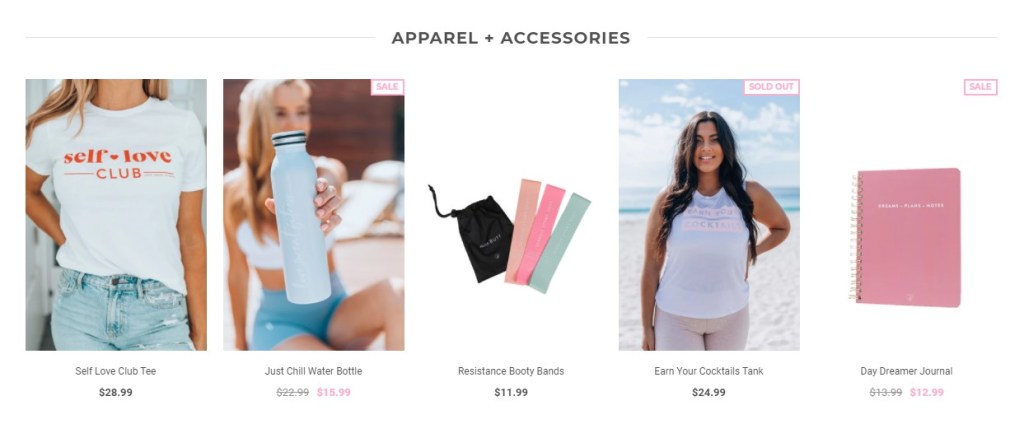
The idea of producing physical items and managing the shipping process might sound a little bit intimidating. However, you don’t actually need to do all of that.
Using print-on-demand services like Printful, Teespring, or Spreadshirt, all you need to do is create custom designs for products and display them on your online store or blog. Those services will take care of the rest of the work for you.
Online services
If you are confident that you can deliver good stuff for other people, offering online services like freelance writing, consulting, or coaching can be a very stable monetization model for your blog.
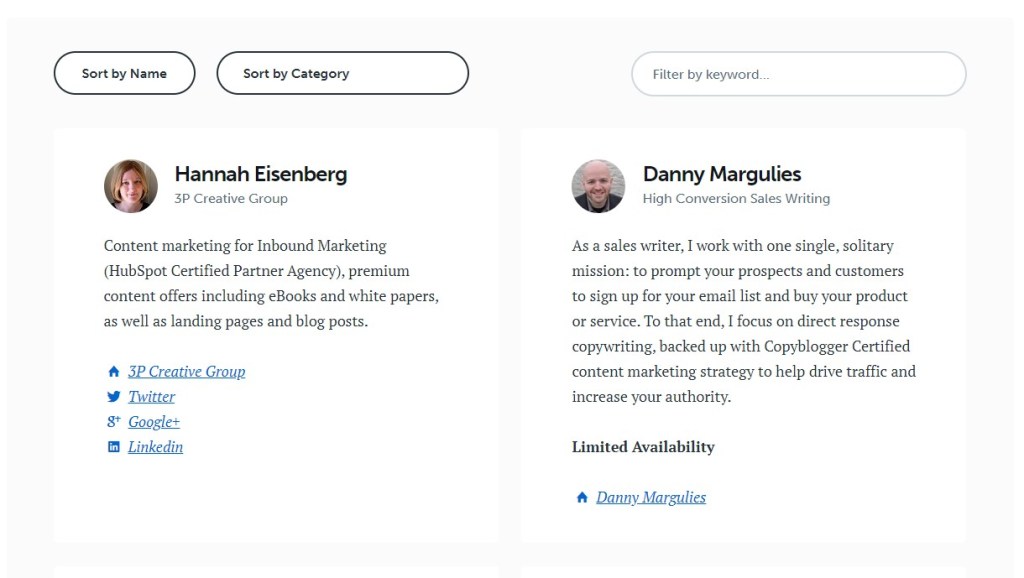
Although it can take a lot of time and work, the reward this model can bring to you is immeasurable. Not only can you make a lot of money from offering those online services, but you can also use them as an opportunity to spread your blog to a bigger community.
It’s important to note that the services you offer should closely relate to your blog’s content. Otherwise, it would be tough for you to find customers.
How to make money blogging the successful way
Now you know various methods to monetize a blog. However, not every model is suitable for every blog and everyone. Additionally, if you are a beginner blogger, doing good monetization to maximize your earning potential may not be easy.
Below are the 7 steps you need to take to make money blogging in the right and successful way.
1. Start your own blog
If you’ve already owned a blog, you can immediately move on to the next step. Note that some pieces of content going forward might only be suitable for a WordPress blog. The reason we use WordPress is that it offers many versatile tools that can help you write amazing blog posts and quickly set up your monetization strategies.
To start a WordPress blog for beginners, first, you need to pick a niche.
A niche is a topic that your blog will focus on. There are a wide variety of blog niches, ranging from food, fitness, traveling, finance, and marketing to lifestyle. You should choose a niche that you understand and love. Otherwise, you will have a hard time writing about it.
The next thing you need to do is to pick a name for your blog. It should be short and closely related to your niche. People usually pay attention to the blog name and expect that they land on the right site that offers the content they are looking for.
Finally, choose a web hosting service. It will be the ticket to bring your WordPress blog online so people can find and read your content. Bluehost is one of the best hosting services recommended by many bloggers and WordPress themselves to host your blog.
If you want an in-depth tutorial on this topic, check out the step-by-step guide to starting a blog successfully.
2. Research suitable monetization models for your blog
The Pareto Principle states that 80% of the outcomes result from 20% of the causes. Applying this rule, in any business, the goal is to find the sources that are the most profitable and focus primarily on them.
Before deciding on a monetization model for your blog, researching other bloggers within the same niche as yours is recommended to figure out which methods generate the best results and which don’t.
Suppose you own a food blog. You can type in Google search “most popular food blogs” to have a list of all the popular blogs within this niche.
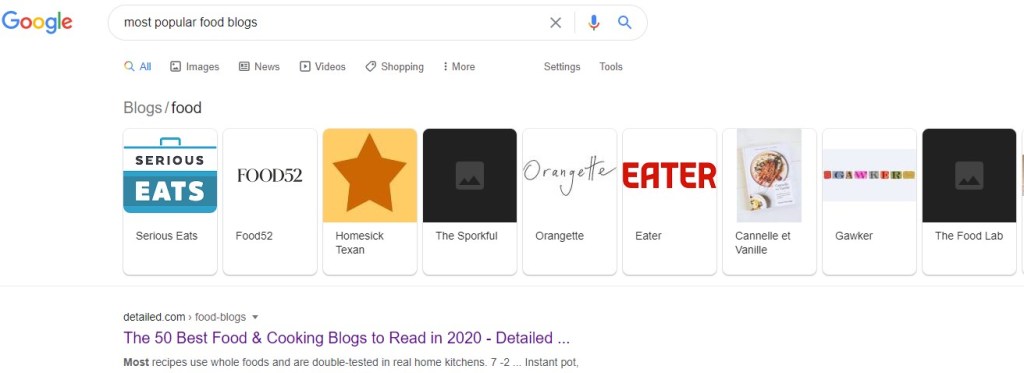
Examine a couple of them and see what they are doing. It would be best if you could find a blog with an income report since it usually includes details on how the blog makes money.
Take Pinch of Yum as an example again. The most obvious monetization method is displaying ads.
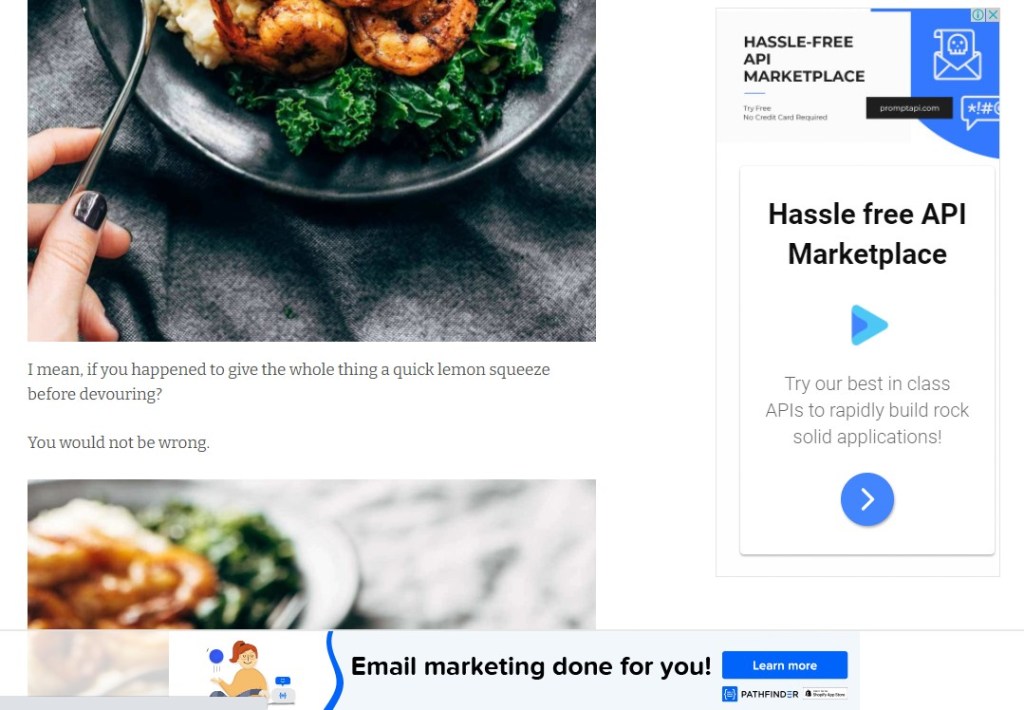
You can see that they display an ad at the bottom of their blog and on the right side of each post.
The second monetization method of the blog is affiliate marketing. They include links to Amazon that you can click on and buy the equipment mentioned in their posts.
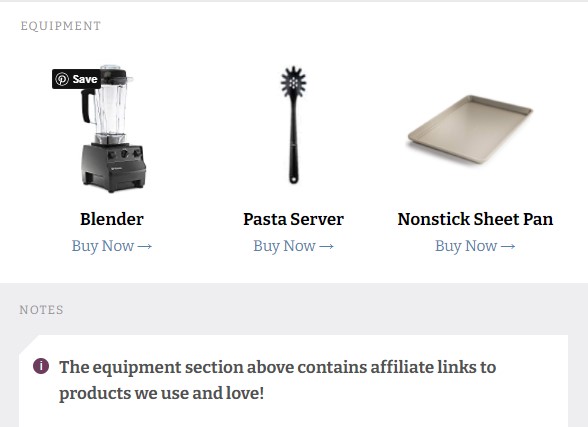
Looking at their income report, besides Amazon Associates, they also join other affiliate programs from Bluehost, Genesis Theme, Elegant Themes, ActiveCampaign, and AWeber.
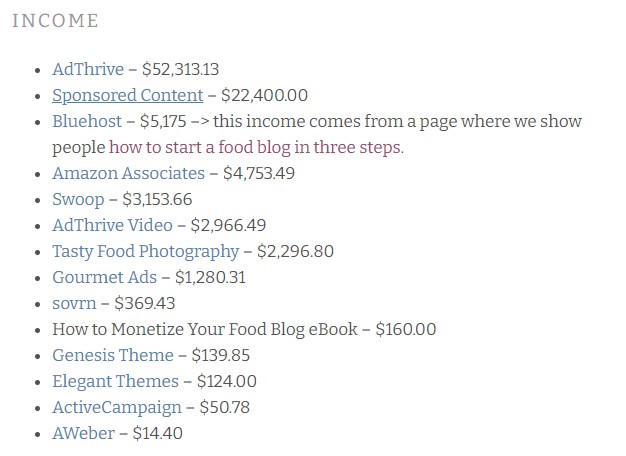
Another significant source of income comes from sponsored content. The tasty food photography course also generates nearly $3,000.
They don’t seem to sell any eCookBook. However, it is another method that you can make a decent amount of money from if you own a food blog.
Go through a couple more blogs with the same process, and you should have a general idea of which method you should invest your time and effort into the most.
3. Create great blogging content
If you want to make money from your blog, producing great content should be the number one priority.
Many bloggers tend to focus too much on designing or promoting their blogs. They don’t put enough time and effort into creating great content and deliver value to their readers. As a result, people quickly come and leave without taking any action.
It’s important to always remember that the most valuable thing for your readers is what they can get out of your blog. So, focus on it.
Now, let’s go through some actions you need to take in order to create blogging content.
Research blog post ideas
Even if you are an expert in your niche, there is no guarantee that the content you write will attract tons of readers. It might already be outdated or too specific.
Great blogging content is not a combination of fancy pieces of text without an obvious purpose. It has to be something that people want to know and read about.
Because of that, researching blog post ideas is a must when it comes to creating a blog that can make money.
There are 2 main techniques that can help you with the process, including keyword research and competitive analysis.
Keyword research
Researching keywords provide you the benefit of understanding the current trend in your niche. It will also help you make your blogging content more SEO-friendly.
Google Autofill is a feature of Google Search Engine that makes it easier and quicker for users to perform a search query. However, as a blogger, you can use it as a keyword research tool since the autofill results come from the most common questions people are asking for.
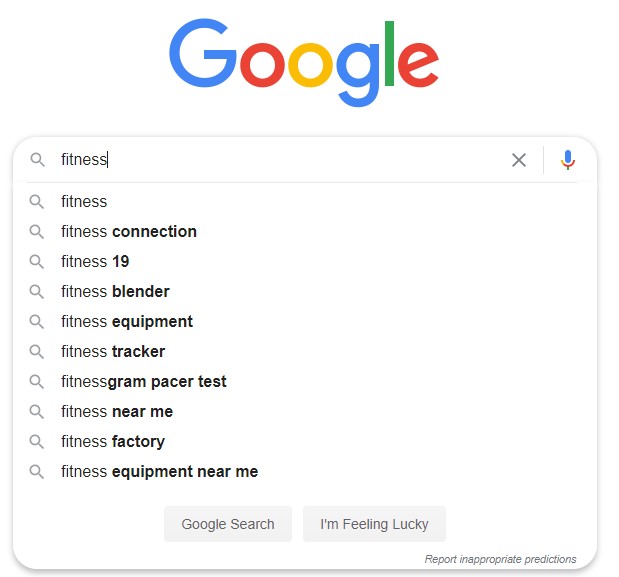
Looking at the autofill results for the term “fitness” above, some blog post ideas for a fitness blog can be “the best fitness equipment” or “the best fitness trackers.”
A more powerful tool you can use for researching keywords is Ubersuggest.
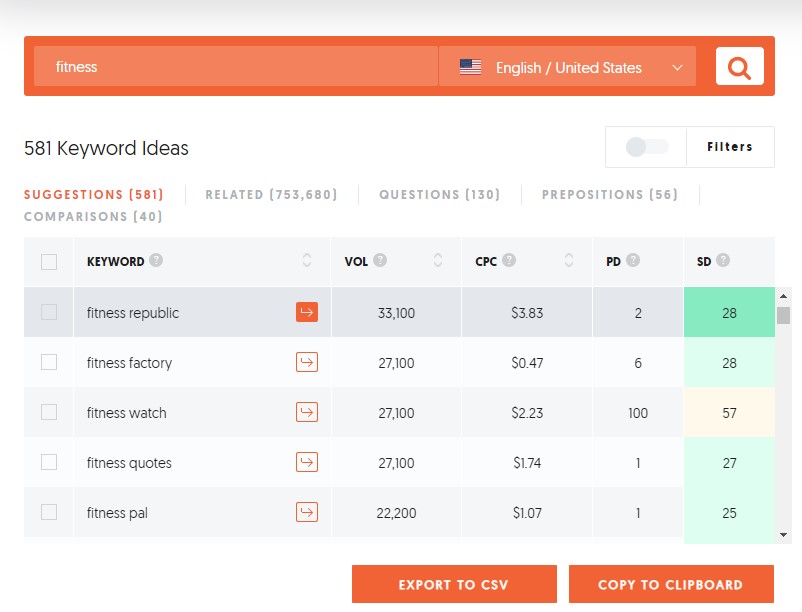
The tool offers a wide variety of metrics, including monthly search volume (VOL), Cost Per Click (CPC), Paid Difficulty (PD), and SEO Difficulty (SD).
A general rule of thumb is to pick ideas that have high search volume and low SEO difficulty. It makes your content easier to be found, especially if you are a beginner. Choosing an idea with a high CPC is also recommended since the metric indirectly indicates a high demand for a specific product related to the keyword.
SEMRush is another more comprehensive and advanced tool that can replace Ubersuggest. It’s a little bit pricey but still worth a try.
Competitive analysis
Analyzing competitors in your niche is another method to find content ideas for your blog. Also, knowing what works for others and replicating their success is a faster way to reach your own success.
Using Ubersuggest and entering a competitor domain name in the search field, you can have a look at their monthly traffic and the number of organic keywords they have.
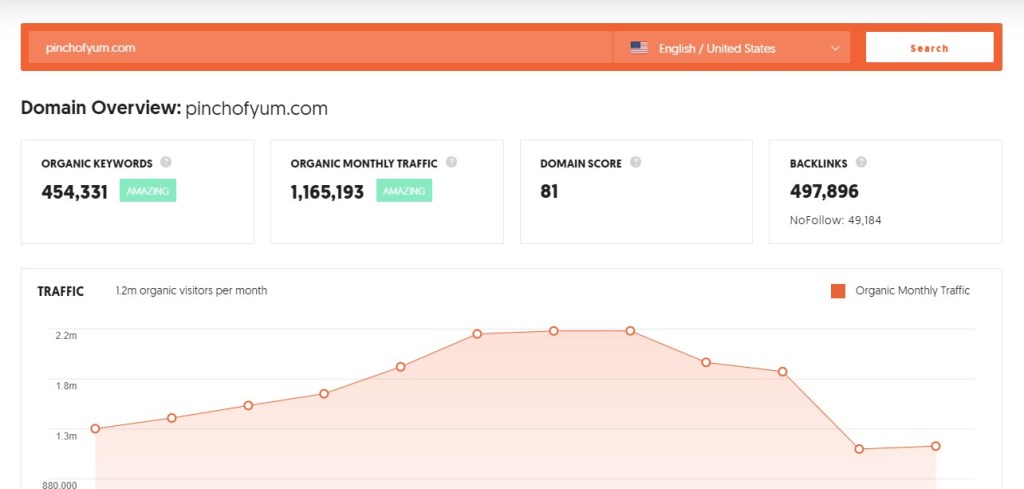
You can find the most popular pages of your competitor by scrolling down to the middle section.
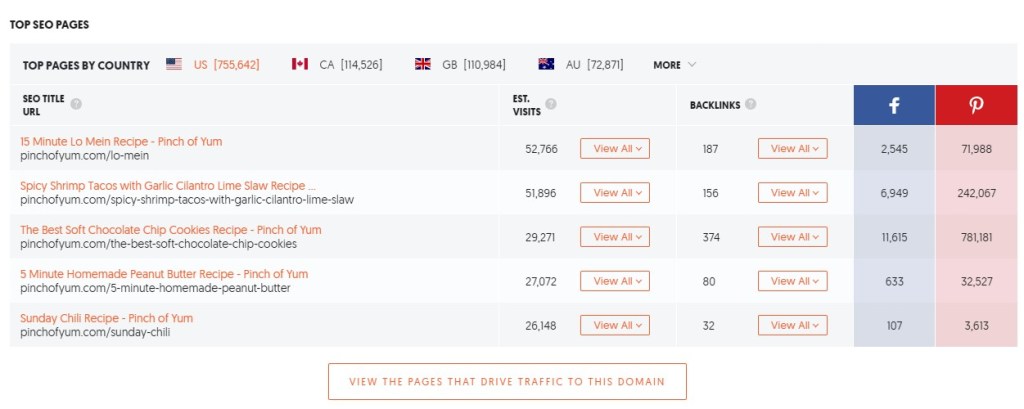
Using this approach for a couple of different blogs will give you which content ideas you should write about and which money-making methods you should use for each of your posts.
Make your content Grammarly
Grammarly is a popular free online assistant that helps you check for mistakes in your writing, including correctness, clarity, engagement, delivery, and plagiarism checking. It can also help you adjust your writing style to fit a certain group of audience.
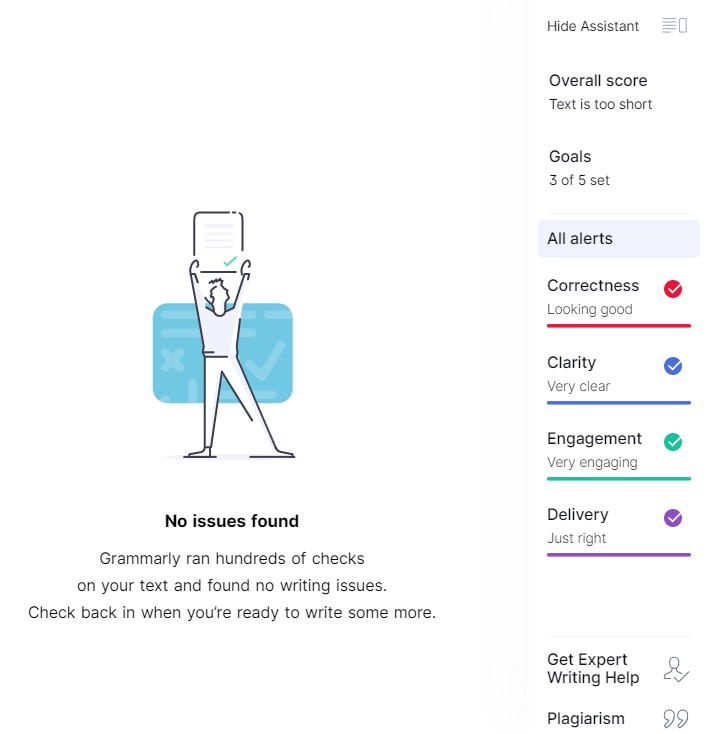
We use the term “Grammarly” for a piece of content to indicate how clear and unique it is. The more you can make your writing Grammarly, the better the content it is to your readers.
Note that we only use the term as an indication of good content. Grammarly is an amazing tool, but it’s not perfect. So, use it as your assistant, not your boss.
Make your content SEO-friendly
SEO stands for Search Engine Optimization, a set of best practices that aims to increase organic traffic quality and quantity to a website. Organic traffic occurs when someone performs a search query on a search engine like Google and ends up landing on a specific website.
Search engines actively go through billions of websites on the entire internet to figure out the best content for their users. It looks at various SEO factors on a website like how relevant the content is, how well it structures, or how authoritative the site is.
Making your content SEO-friendly not only means that your content is what your visitors are looking for, but it also ensures that the content is easy to understand and doesn’t stray away from its main idea.
If your blog runs on WordPress, you can install the Yoast SEO plugin to start SEO-ing your content. It’s a beginner-friendly tool that checks for various SEO problems on your blog and provides you with guidance on how to fix them.
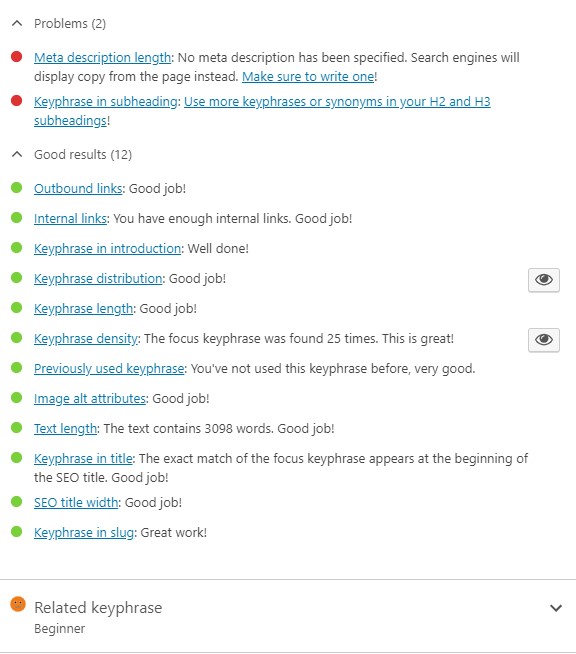
4. Set up your blog for each money-making model
As mentioned earlier, depending on your niche and your content ideas, you might want to set up different monetization methods for your blog.
The section below introduces you to the general installation process of the most common monetization models (mainly for WordPress blog).
Set up advertising
To start displaying ads for your blog, first, you need to sign up for an ad network. Google AdSense is the number one choice if you are a beginner blogger.
Go to Google AdSense and click on the “Get Started” button in the top right corner to sign up for the ad network.

The first time you enter the Google AdSense dashboard, you will have to submit an application asking for some basic information. It usually takes Google a few days to review it before you can start placing ads on your blog. So, please be patient.
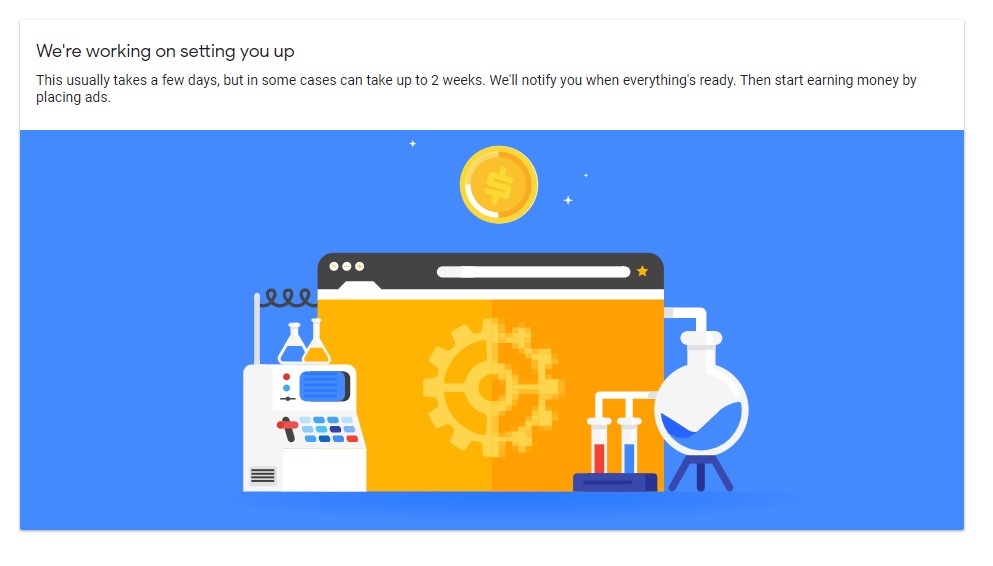
Next, install the Google Site Kit plugin for your WordPress blog. It’s an official tool developed by Google that can help you manage not only Google AdSense but also various other Google services, such as Search Console and Google Analytics.
Once the plugin is installed, select it from the left sidebar of your WordPress dashboard and click on “Start Setup” to the connecting process.

Follow the Site Kit guide and you should have no problem setting up your blog with the service.
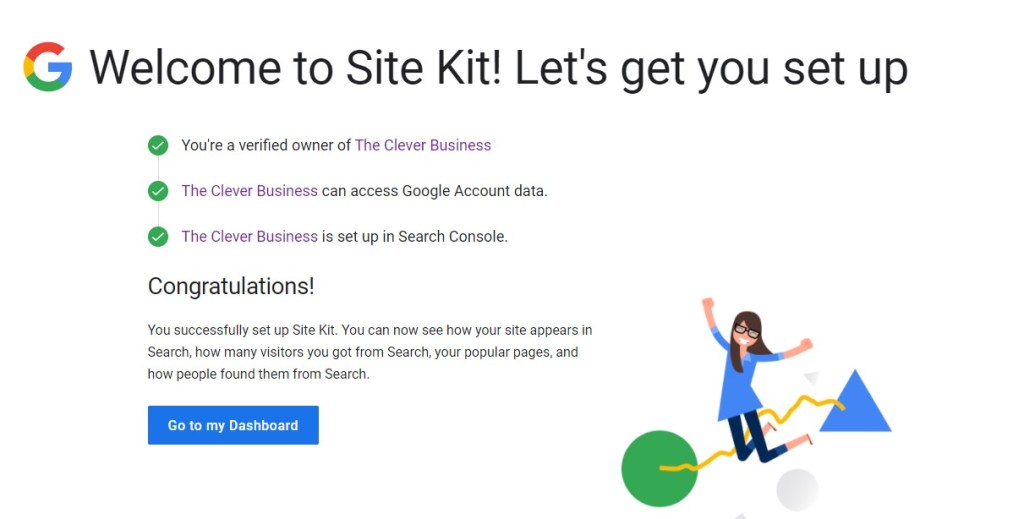
Note that Google Site Kit might require you to verify the ownership of your blog. You can do it through Google Search Console.
The final step is to connect your Google AdSense account. Select “Settings” from the “Site Kit” tab, click on “Connect more services,” and choose “AdSense.”

Site Kit will automatically place special code across every page of your blog.

You are all set! Your blog will start displaying ads once your AdSense account is approved.
Manage affiliate links
After signing up for affiliate programs, you will have your own affiliate links. You can begin putting these links directly inside your blog posts to start making money.
However, it’s better to manage all of your affiliate links in one place, so you know which link is popular on your blog and how many times people have clicked on it.
ThirstyAffiliates provides many features for WordPress bloggers to manage and monitor affiliate links easily. You can check out the complete guide on setting up this plugin here: How to use ThirstyAffiliates to add affiliate links in WordPress.
Create business pages
A business page gives your visitors information on various services that you offer. It can be anything from freelance writing, logo design, illustration to social media marketing.
Setting up a business page for your blog should be the same as creating any other page. However, there are some factors that you need to pay close attention to build the page successfully.
Expertise
Your business page should show that you are an expert in your field. It should also clearly communicate the value you can bring to your customers.
This section can include information like who you are, how long you have been in the business or the skills you have.
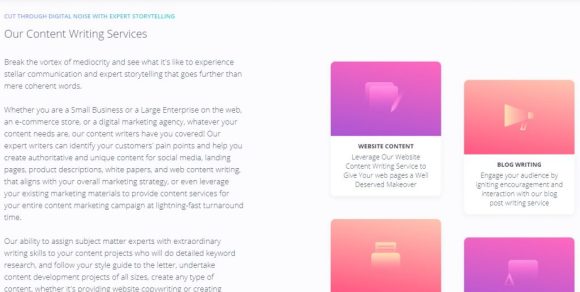
Service features
A section for all of your service features can help your customers understand more about what benefits they can have when working with you over others.
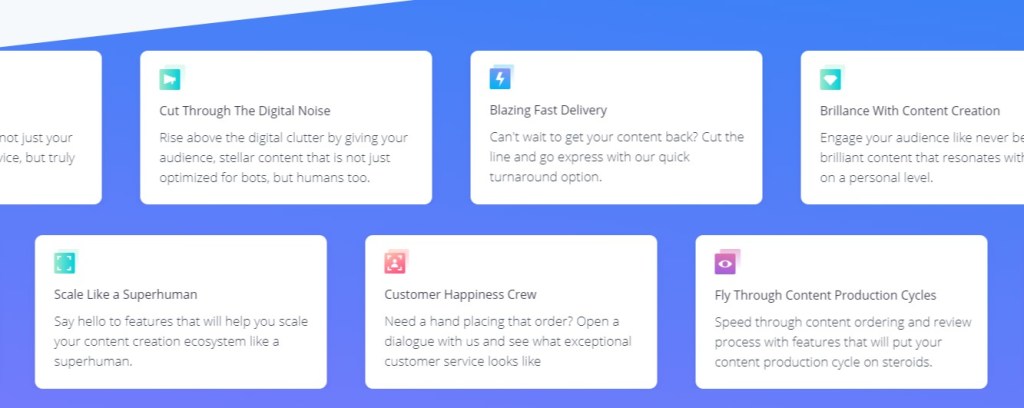
Pricing table
A pricing table gives your customers a detailed look at various plans of your service as well as how much each of them costs.
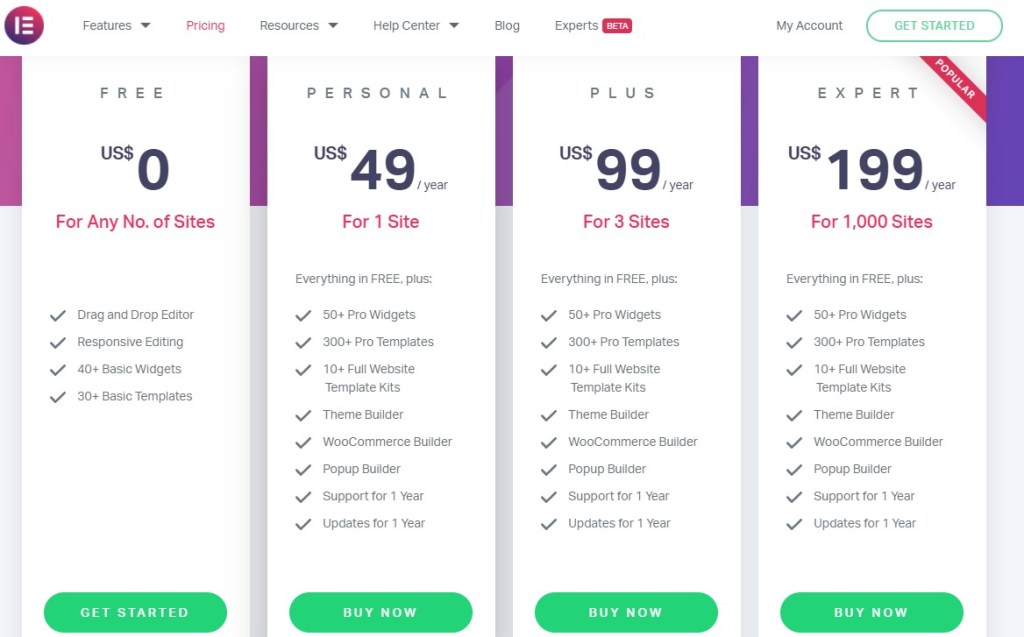
If you are using Elementor as your WordPress page builder, you can install the Premium Addons for Elementor plugin or purchasing Elementor Pro to quickly create a pricing table for your business page. Otherwise, Pricing Table by Supsystic is a good alternative for non-Elementor users.
Customer testimonials
Customer testimonials add an additional layer of trust for your service. It also acts as a catalyst that positively influences the purchasing behavior of your customers.
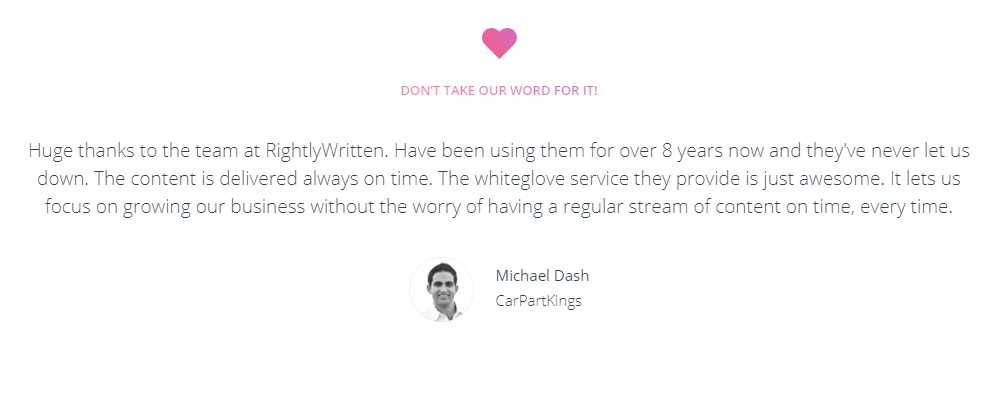
FAQs
The FAQs section answers your customers’ most frequently asked questions and clarifies any doubts they might have.

Contact form
Finally, you should include a contact form for your business page. If people have any other questions about your service, they can do it immediately.
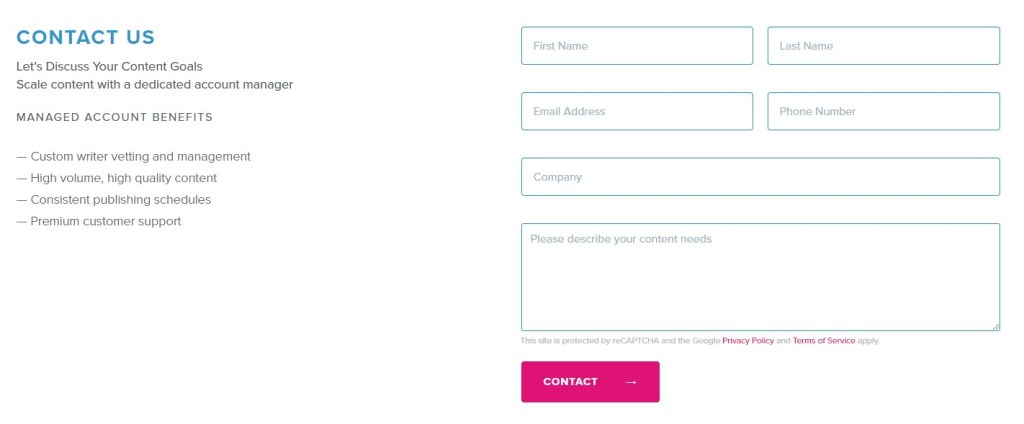
WPForms, Ninja Forms, or Contact Form 7 are some popular WordPress plugins that can help you set up a beautiful contact form in a matter of minutes. You can also achieve the same thing using Elementor Pro.
Create a membership site
If you decide to earn money by offering member-only content, you need to make your blog into a membership site. It includes many factors, such as member signup, membership level, and content restriction.
MemberPress is an all-in-one membership plugin for WordPress. It provides many advanced features that allow you to build and manage a membership site as you wish instantly. On top of that, the tool integrates seamlessly with many other forum plugins such as BBPress that you can use to create premium community forums for your members and strengthen their relationships.
For a complete guide on building a membership site, visit The ultimate guide to creating a WordPress membership site.
Build a store
A store helps you display and sells digital or physical products.
There are 3 options you can choose when it comes to building a store: Becoming a seller on an established e-commerce website, creating a separate store, and integrating a store page into your blog.
It is relatively simple to become a seller on a popular e-commerce website. You just need to sign up for their seller program, pay a monthly fee (if applicable), and start displaying your products. We recommend Amazon, eBay, or Esty.
The second option is to create your own separate store using an e-commerce platform, such as Shopify, BigCommerce, or Magento. The advantage of this approach is that you have full control over every part of the store.
The final option is to integrate a store page into your blog. Although it might be less flexible and harder to scale than building a separate site, it takes little time and money to create. For this approach, we recommend using WooCommerce for your WordPress blog.
Check out An Introduction to eCommerce for WordPress for more information.
5. Promote your blog to start making money
It’s obvious that a blog with no traffic cannot make money. However, there is no magic that can suddenly get people into your blog unless you tell them to.
Like any business, promotion plays an imperative role in deciding the success of your blog.
Social traffic
Facebook, Instagram, Twitter, Youtube, and Pinterest are popular social networking platforms that have billions of active users. They are great places to start putting out great content, drive traffic to your blog, and build a strong community around it.
Depending on your niche, you might want to invest most of your effort into one or two networking sites only. It helps you create better posts that fit your chosen social platforms and avoid burning yourselves out.
As a beginner, consider researching your competitors to figure out which social media websites they use and pick the ones that have the highest engagement rates.
For example, PinchOfYum has 4 social media profiles on Facebook, Instagram, Twitter, and Pinterest. However, Instagram and Pinterest seem to be the two most engaging ones.
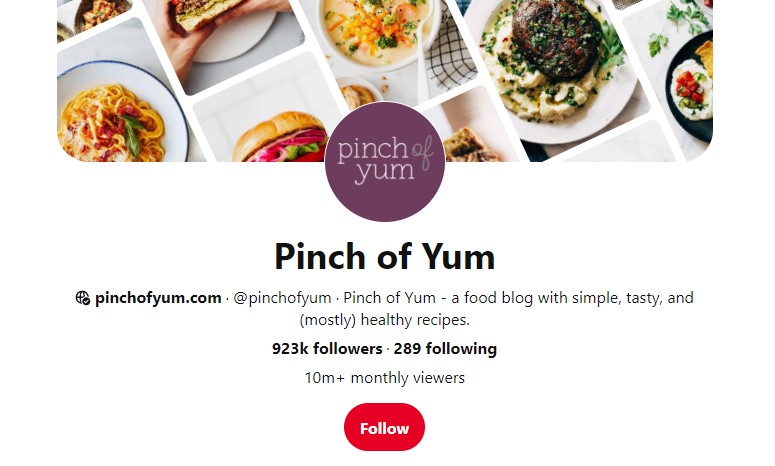

Creating social posts that perfectly fit these two platforms should be the priority. For other sites, you can re-publish those posts or create slightly different versions.
Paid traffic
Paying for advertising campaigns is the quickest way to drive traffic to your blog and gain exposure.
The two most popular advertising services you can use to get your blog in front of people are Facebook Ads and Google Ads. Both are really powerful and not too costly to run. However, since users’ behaviors on Facebook and Google are largely dissimilar, advertising on each of the platforms is vastly different as well.
Organic traffic
As previously mentioned, organic traffic occurs when someone lands on a website through search results.
According to Backlinko, only 0.78% of Google searchers clicked on a result from the second page. It means that if your blog post doesn’t appear on the first page for a search query, it virtually gets no traffic.
Besides SEO-friendly content, there are probably hundreds or even thousands of factors that search engines use in ranking your blog. No one really knows exactly what they are except Google engineers themselves. That’s why driving organic traffic to your blog is very difficult.
Having said that, increasing organic traffic can be extremely rewarding. You won’t have to pay a single dollar on advertising campaigns and can still attract thousands of visitors to your blog.
If you are interested in this topic, have a look at 10 Google Ranking Factors You Shouldn’t Ignore.
Referral traffic
People that visit your blog by clicking a link on another website are considered referral traffic.
Increasing referral traffic to your site is important for 2 main reasons.
First, similar to organic traffic, referral traffic has the potential to drive a large number of readers to your blog without you having to spend money.
Second, referral traffic has a huge impact on your search rankings. When someone backlinks to one of your blog posts, search engines see that as a positive signal, which indicates your content is trustworthy and useful to others. So, it should be ranked higher.
You can use many techniques to increase your referral traffic, including Guest Blogging, Press Releases, or Answering Community Questions. All of them take a lot of time to do, but the result is worth the effort.
Email traffic
Email traffic refers to when people land on your blog through an email you send to them. This is done by collecting your visitors’ emails, then run an email marketing campaign.
It’s arguably the most valuable traffic source to make money since people on your email list are already interested in your blog content. They are much more likely to take action on your blog than others, such as buying an affiliate product.
To start getting email traffic, you have to sign up for an email marketing service like ConvertKit. It helps you manage your email list and send emails automatically to your subscribers.
Then, place signup forms in various places on your blog to collect emails. They can be your site header, footer, or sidebars.
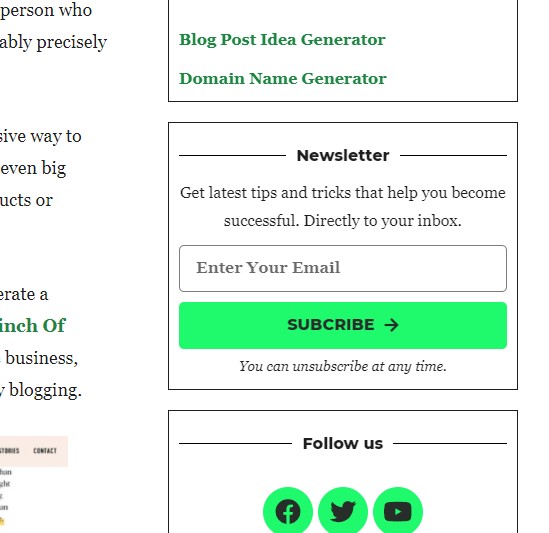
You can also put signup forms sparingly in your blog posts. However, be careful not to distract the reading experience of your readers.
An effective technique many bloggers use to improve their signup forms’ conversion rate is to use lead magnets. They are incentive factors that improve the likelihood of a person giving out their email in exchange for a benefit.
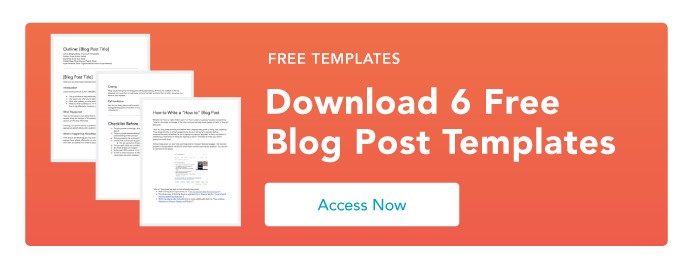
Popup forms and flyout forms are also widely used by bloggers because they can quickly grab visitors’ attention. Still, make sure to avoid interfering with the user experience.
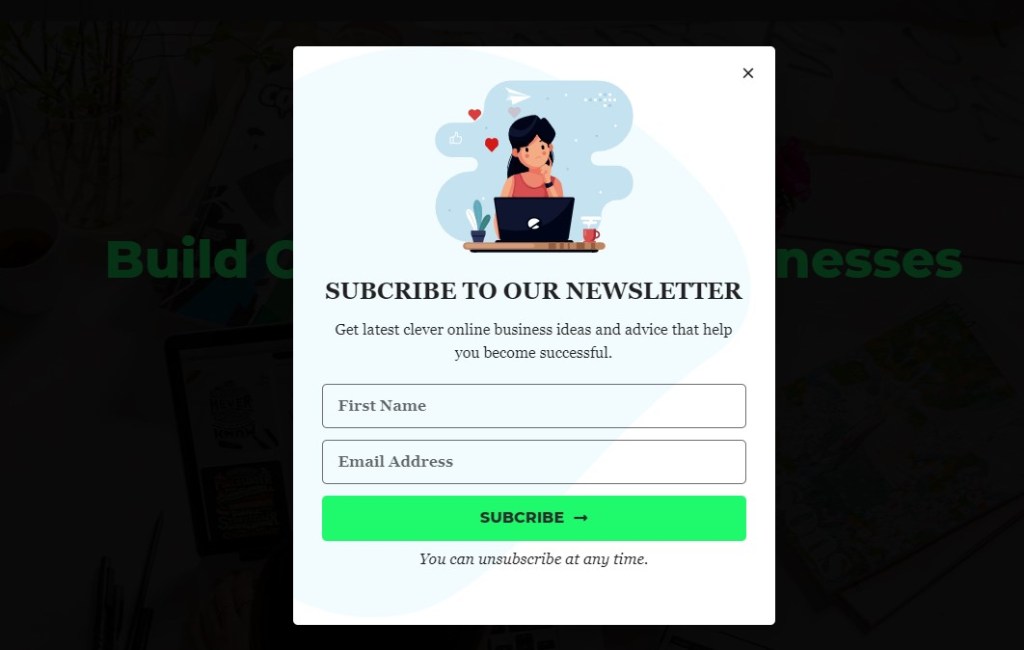
After collecting emails, you can start sending updates about your blog or marketing materials to your list.
6. Use email marketing to the full potential to earn more money
Email marketing is one of the most profitable forms of marketing. It can generate a whopping 4000% ROI (Return On Investment) compared to others.
However, if you are a beginner blogger, you might not be using it effectively. There are 4 key elements you need to keep in mind in order to do email marketing successfully.
Email Automation
Email automation is the process of automatically send a sequence of emails (or an email) to your subscribers when an event is triggered. It allows you to keep in touch with people in your email list at the right time, with little to no intervention.
Using email automation helps you manage a large number of subscribers without having to hire a specialist to do so.
Take the subscribing event as an example. When a new person joins your email list, you might want to send them a sequence of emails to introduce yourself and welcome them to your community.
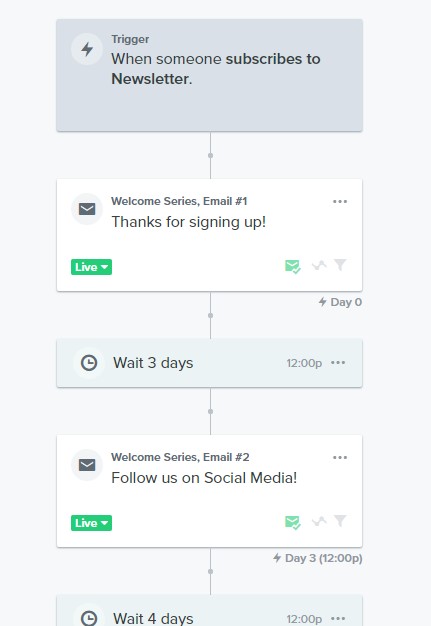
Doing this manually for all new subscribers is nearly impossible. With email automation, you can set up an email sequence beforehand and have them send out automatically.
Segmentation
Segmentation is the process of separating your email list based on personalized interests.
For example, suppose your financial blog has two categories: investing and saving. People interested in the second category might find it weird when you send emails telling them to invest in stocks or real estate and vice versa.
According to Evergage, 88% of marketers state that their email subscribers want a personalized experience. Additionally, 98% of them accept that personalization significantly strengthens customer relationships.
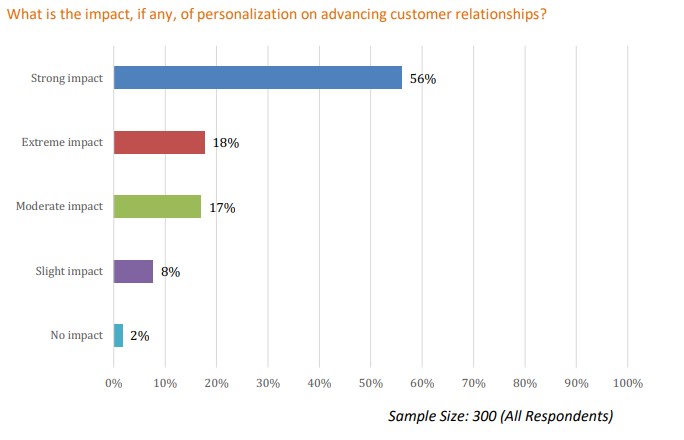
That’s why you need to start segmenting your email list to maximize the potential of email marketing.
Sales letters
Besides sending regular emails to keep your subscribers informed about your latest blog content, you periodically need to send out a sale letter to promote your (or other’s) product or service. It is a piece of content that aims at persuading your subscribers to purchase something.
Without a professional and persuasive sale letter, you leave a lot of money on the table.
If you are unsure how to write effective sale letters, check out How To Write A Sales Email People Want To Respond To. You can also hire a copywriter on Fiverr to help you with the process.
Another method to quickly write your sale letter is to use Automatic Script – a copywriting software that automates the process of creating your sales messages.
Data analysis
Most email marketing services nowadays allow you to track various metrics for your campaigns, including received rates, open rates, link click rates, or unsubscribed rates.
Paying attention to these metrics and comparing them with industry-standard numbers help you determine which parts of the email marketing campaign you’ve done right and which parts need improvement.
For example, the average email open rate is between 15% and 25%. If your number is outside that range, consider writing a more catchy email subject line next time.
7. Treat your blog like a real business
Blogging has the potential to change your life. But, the statement is only true for people who are serious about it.
Besides building a beautiful blog, and creating great content, treating your blog like a business is the key to your success.
Have a clear goal
A goal helps you stay motivated and focus on delivering the best content for your readers. It could be earning $5000/month at the end of the year or driving 5000 more regular visitors next month for your blog.
Having a goal also comes naturally with building a plan. It means you know how many blog posts you need to write each month, how much money you should invest in running ads to acquire new subscribers, and the list goes on.
With a clear goal and an actionable plan, your success should be around the corner.
Build a brand
We recognize a brand not because of its memorable name or its elegant logo, but because of the value it can bring to us.
Take Google as an example. No one really cares about how many colors there are in its logo. People talk about Google because it’s the number one destination for anyone to find information just about anything in the world.
By focusing on delivering the best and useful stuff to your readers, you create a brand that people remember.
Build a strong community
The success of your blog is decided by your community. If your readers don’t love you, even with amazing content, you will have a very hard time creating a successful blog.
To build a strong community, the easiest thing you can do is to answer your readers’ questions as soon as possible. In this way, they feel like they are a part of your community and much more likely to respond to your posts and promotions.
You can also create small contests or doing giveaways regularly to grow your community quicker.
Network with other bloggers
Your competitors aren’t necessarily your enemies. Rather, they are your friends that can help you broaden your audience.
Start networking with other bloggers by commenting on their blogs, saying that their content is amazing. Remember not to promote yourself. Otherwise, they will feel like you are using them for your own benefits, rather than trying to be their friends.
Conclusion
There is no magical method that can instantly turn your blog into a money-making machine. It’s all about diligence and hard work.
Displaying ads, affiliate marketing, sponsored posts, membership content, and selling products or services are some of the common methods to make money from your blog. However, it’s best to research other bloggers to figure out what they are using the most and focus on that.
Remember to treat your blog like a real business. It’s the only way that can help you become a successful blogger.
Useful Resources
- Blog, Blogging, Bloggers, and Blog Posts: Still curious about blogging? Click on the link to learn more.
FAQs
Can I use a free blog to make money?
You totally can. However, a free blog comes with many limitations. For example, you might not be able to customize your blog as you wish or create your own domain name. Those things can significantly affect the monetization potential of your blog.
Which blog niches make the most money?
The most profitable blog niches are food, personal finance, health and fitness, and beauty and fashion. They are extremely competitive, so be sure that you are knowledgeable and passionate enough before choosing one of them.
Why do most bloggers fail?
It might be because they are not persistent enough. The internet is big, and there will always be a place for you. As long as you can produce great content and promote your blog to the right audience, your success will come sooner or later.
The rightful owner of The Clever Business. I review & curate the leading suppliers so you don't waste time scouring the internet.




